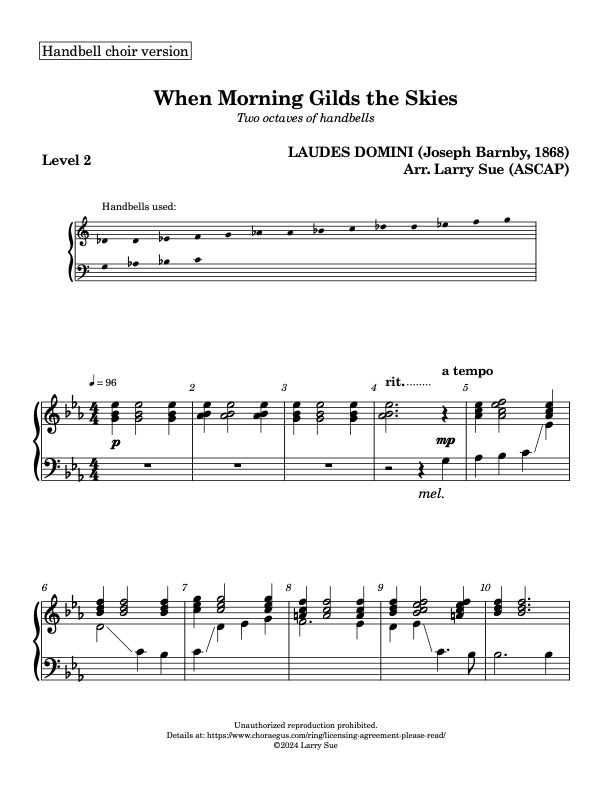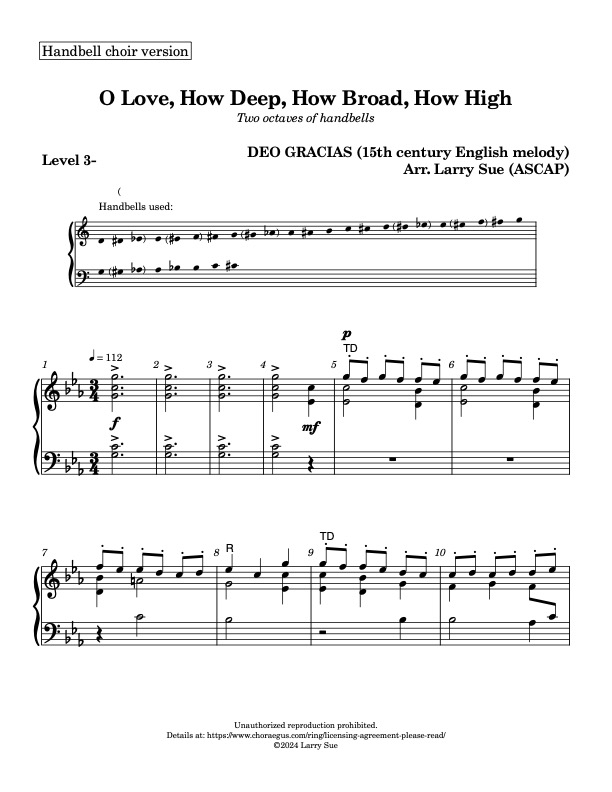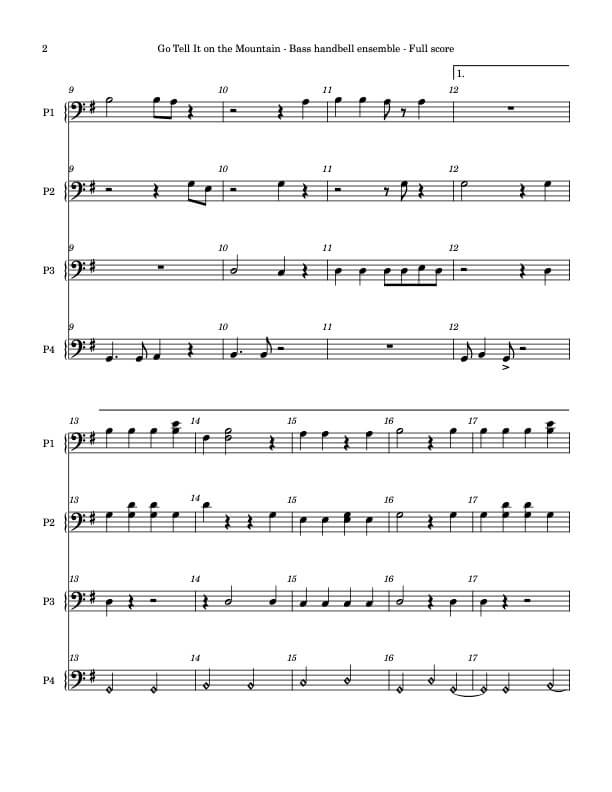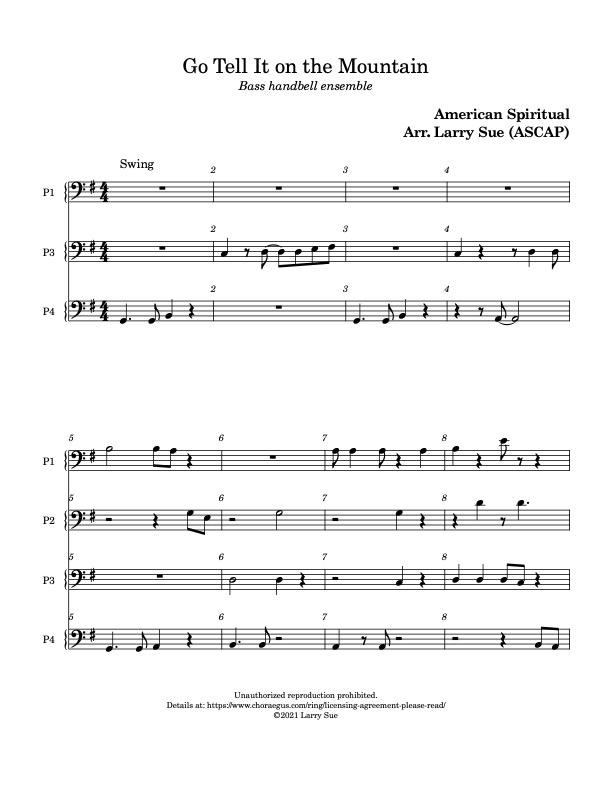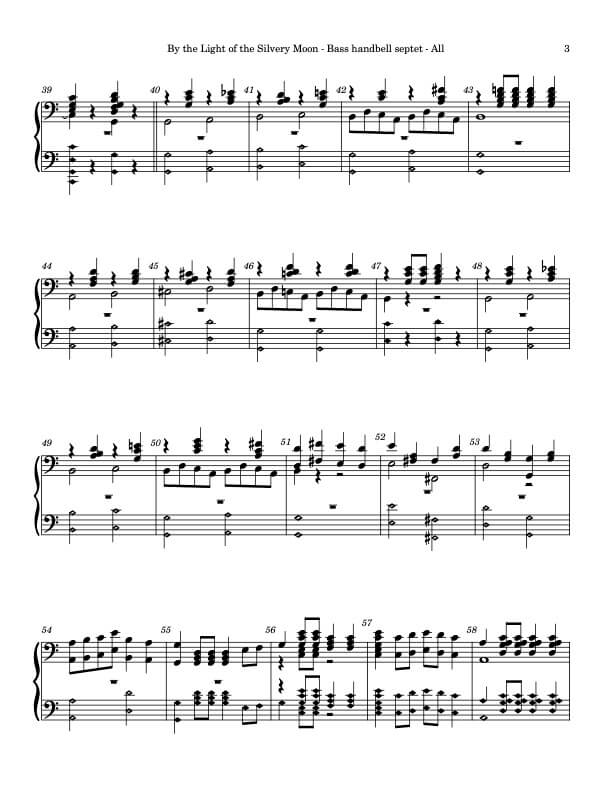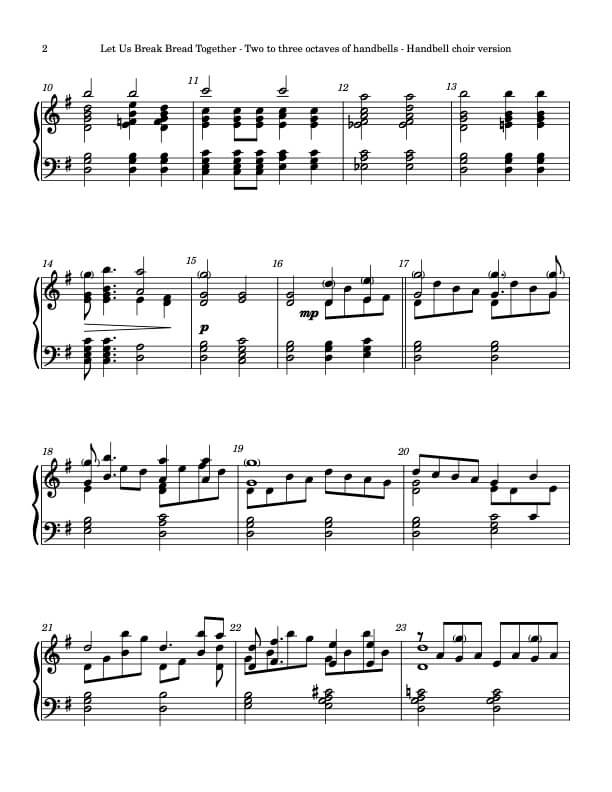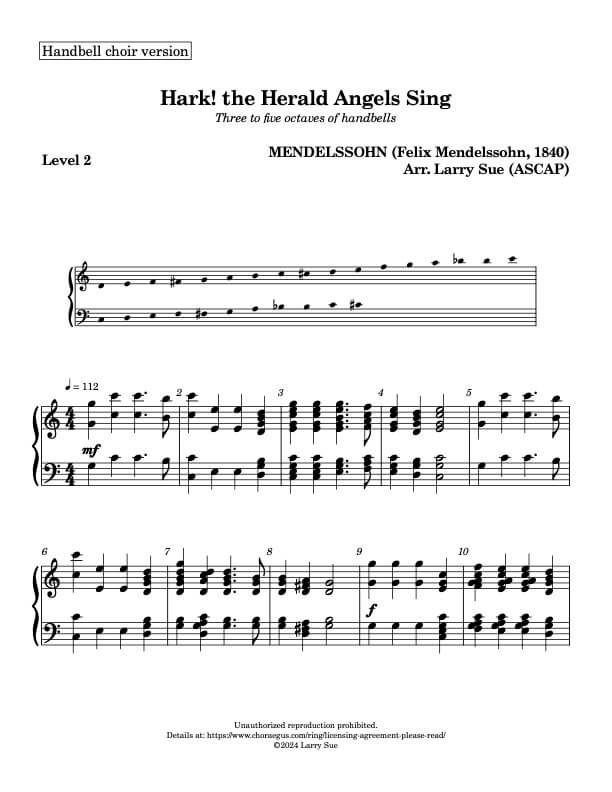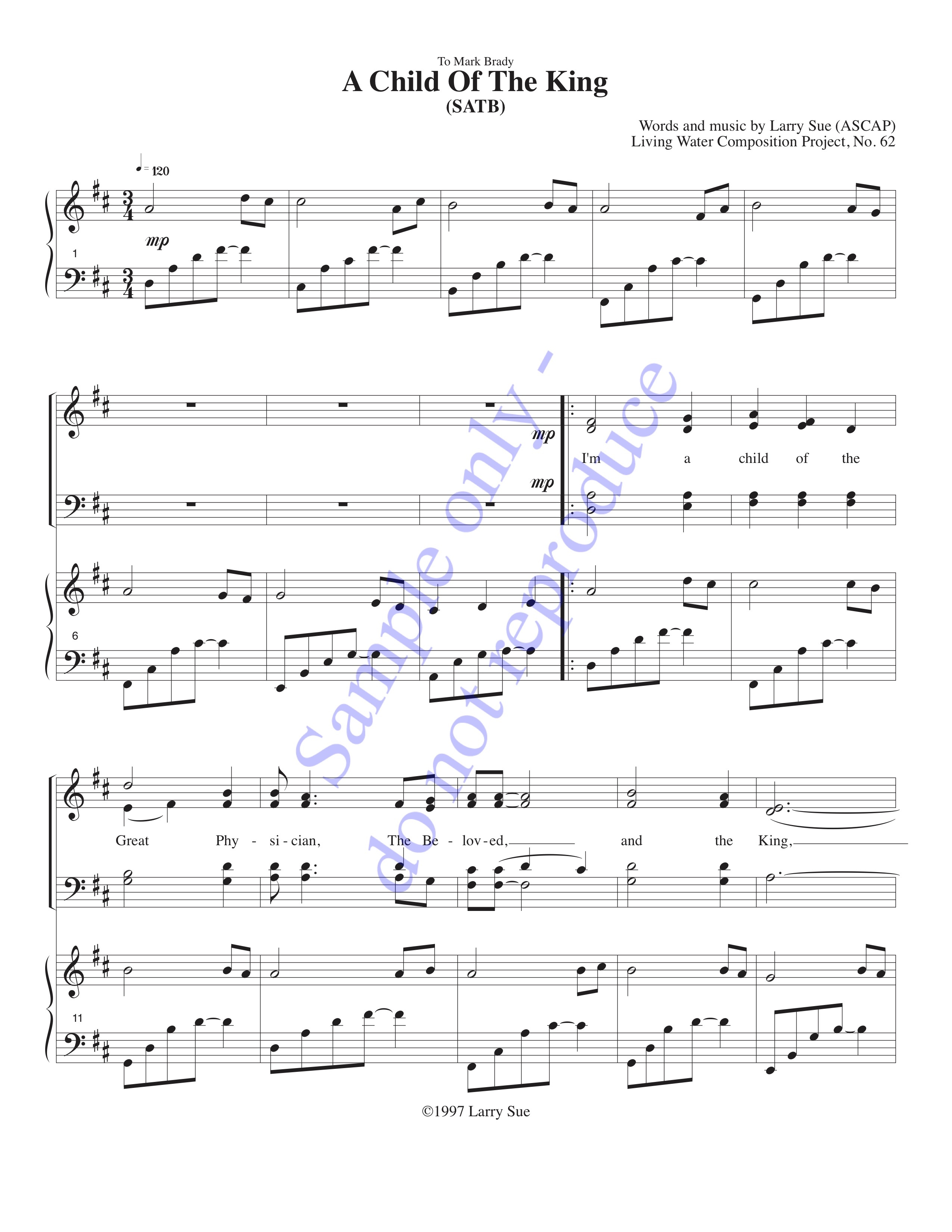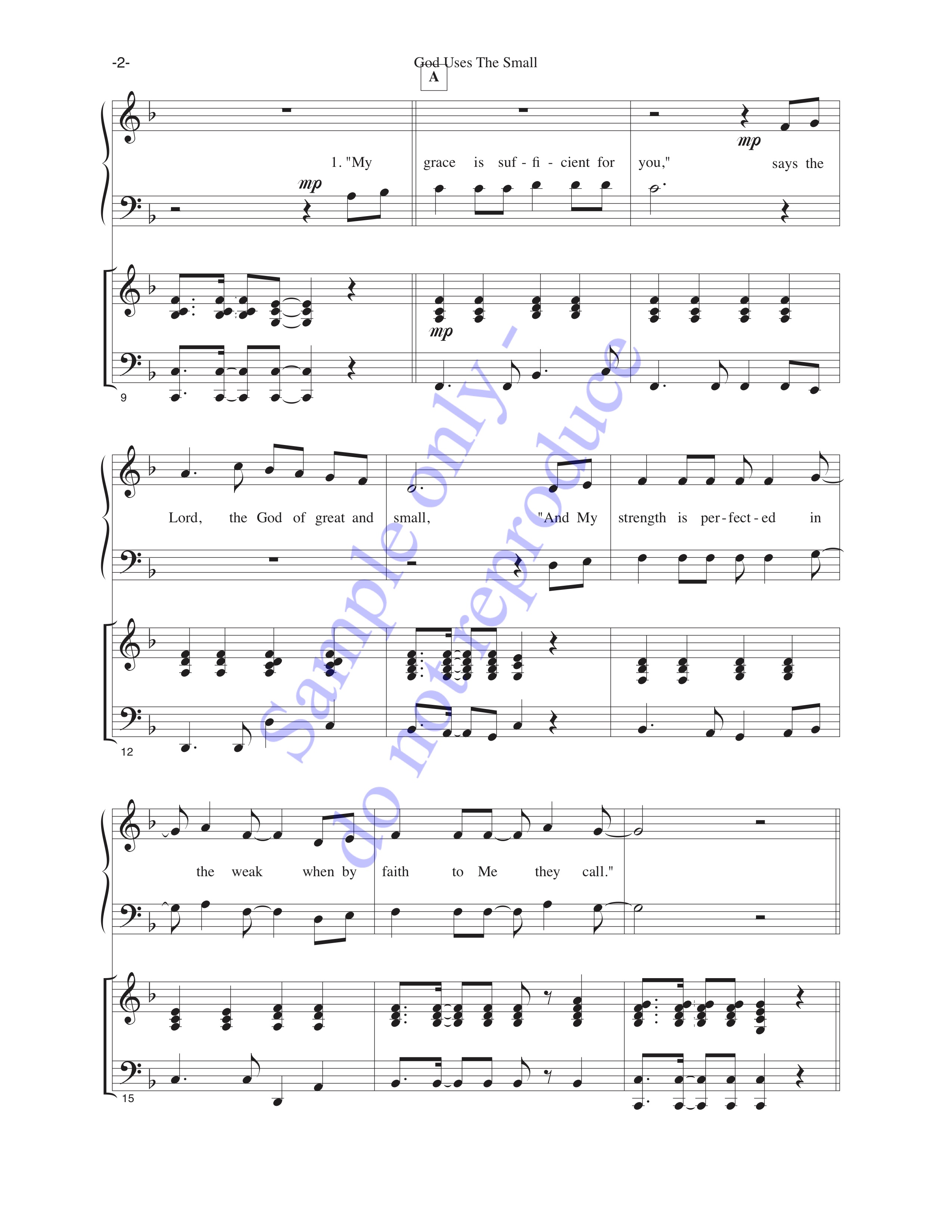“Dual-Range”™ PDFs:
Almost all of our music for eight unaccompanied handbells comes as a “dual-range”™ PDF. Each PDF contains “G5-based” and “F5-based” versions of the music. The G5-based version is first; it’s the original version of the score, with notes almost always in the range G5-G6. This is the version we record in the demonstration videos for these pieces, and it’s the one we (Larry and Carla) perform.
The F5-based version is the same as the G5-based version, except transposed downward a half step or a whole step. This version provides more familiar territory for those who prefer a “space = left hand, line = right hand” approach to ringing assignments.
For more information about why our baseline score versions are G5-G6, read on!
The rationale for G5-G6:
Our eight-handbell scores are based on the range G5-G6 because of the casting size change between F5/F#5 and G5. Manufacture of handbells in the middle and upper ranges is done more efficiently if several different pitches (e.g. G5-B5) can be made from the same casting blanks; then a lower pitch is obtained by lathing more bronze out of the blank than for the higher bells. Once removal of metal from a blank makes the casting wall too fragile, they move to a larger, heavier blank.
The transition to a larger casting size results in the lower-pitched bell having a mellower/gentler tone than the bells in the smaller, higher-pitched casting range. This means there’s a minor timbral discontinuity between F5/F#5 and G5. While it’s true that the same discontinuity exists between B5/C5 and G5/G#5, it’s less noticeable in the higher bells.
Larger casting size change also means a heavier bell. This probably isn’t an issue when ringing with one bell in each hand, but can result in a significant weight imbalance for four-in-hand ringing (compare F5/A5 with G5/B5, for instance). Also, more weight generally means less maximum speed, and so it can be more difficult to achieve score tempo in some of our faster-paced arrangements.
But: If you want to play our eight-bell scores with their original “G5-based” sound, all you have to do is assign the bells from the chart in the G5-based score, and then pretend you have the notes in the F5-based score.


